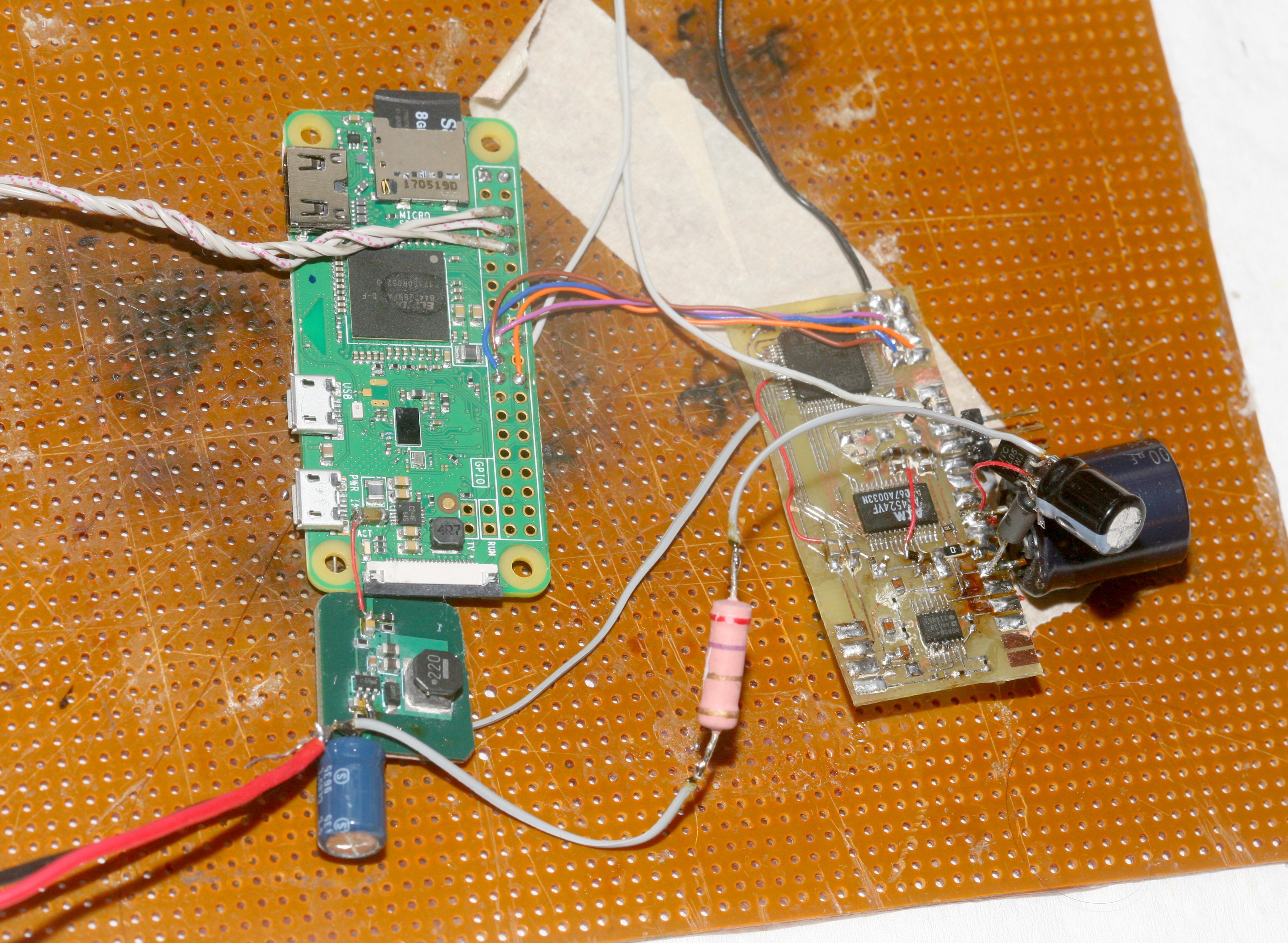Stepped the samplerate down to 48khz & averaged the 2 channels. This gave 14.5 bits, based on the peaks in the waveform. A true signal to noise ratio would use the RMS of the waveform, which might be slightly lower. Note that connecting the serial dongle to the STM32 adds RF noise.
Doing some basic calculations with the mighty PCM4222's datasheet showed even it only has a hair more than 17.5 real bits, with the figure degrading as it rises in samplerate.
The same calculations with the CM109 show it only has 12.5 bits, so no reasonably priced commercial product is going to do better than a home made board. Unfortunately, the STM32's built in 12 bit ADC would probably only give 10 bits.
If WIFI is turned off with the rfkill command, it can run on a common power supply without degrading the noise.
Powering the 78LS05 through a 5R & 470uF, with all the digital downsampling actually knocked the RF noise to a useful level. Any R above or below 5 increased the RF noise. There's a strange attraction between these active regulators & 5 ohms.
The WIFI power can also be changed with iwconfig wlan0 txpower commands. The effect on the waveform is dramatic at 1/262144 per pixel. 5dBm seems to be the limit before the noise becomes detectable.

The PI defaults to 31dBm which officially is 1 whole Watt. It actually works at txpower 0 which is 1mW. The effect on the waveform is from power consumption more than emissions, when the boards are spread out. When stacked, the emissions at even 10dBm obliterate the waveform. The BCM4343 indeed is rated for maximum consumption of 1W but maximum transmitter output of only 20dBm.

Finally captured some audio on the Zoom H2 with a 10k test input & compared it to the AK4524 test setup with 5dBm wifi.

Cable length was longer with the zoom, it had more input stages, but its gain was at minimum, which should have given the lowest possible noise. This ages old benchmark for superior audio was still a bit noisier than the dead bug circuit.
Ideally, there would be a way to control it without any radio. Wireless control from a phone is essential. A phone dongle for IR communication would be clunky but viable. Eliminating WIFI would allow the PI & a lot of components to be eliminated. The PI makes it bigger than a Zoom H1, but is a quick & dirty solution which can be dropped into a Zoom replacement.
 lion mclionhead
lion mclionhead
Discussions
Become a Hackaday.io Member
Create an account to leave a comment. Already have an account? Log In.